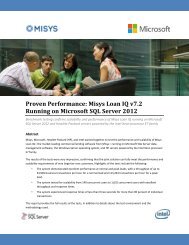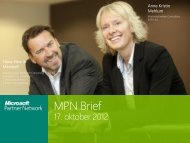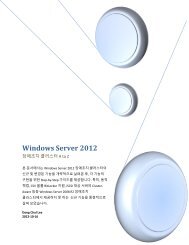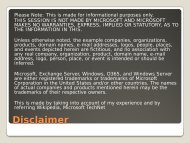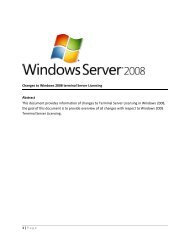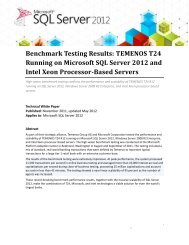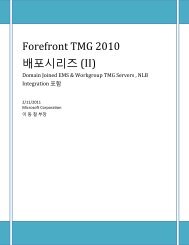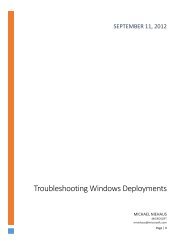Best Practices for Running Dassault Systèmes ENOVIA ... - Microsoft
Best Practices for Running Dassault Systèmes ENOVIA ... - Microsoft
Best Practices for Running Dassault Systèmes ENOVIA ... - Microsoft
You also want an ePaper? Increase the reach of your titles
YUMPU automatically turns print PDFs into web optimized ePapers that Google loves.
The following list of Per<strong>for</strong>mance Monitor counters is a condensed set of valuablemeasurements you can use to understand your database server’s activity. It only scratches thesurface of the SQL Server 2008 monitoring that is possible, but is a useful starting point.Table 11: Some Per<strong>for</strong>mance Monitor countersType Object Counter Instance DescriptionCPU Processor % ProcessorTime- Total CPU use on the serverCPU Process % ProcessorTimeSqlservrCPU use by SQL Server aloneI/O Physical Disk Disk sec/Read All volumesused bySQLI/O Physical Disk Disk sec/Write All volumesused bySQLLatency of reads from disk. If this is high,server may be I/O bound.Latency of writes to disk. If this is high,server may be I/O bound.Memory Memory Page Faults/sec - Rate at which Windows could not findthe page it needed at the expectedlocation in memory.Memory Memory Pages/sec - Rate at which Windows read or wrote tothe system paging file. If the ratio of thisto Page Faults/sec is more than a fewpercentage points, memory may beinsufficient.MemorySQL Server:Buffer ManagerBuffer cache hitratio- % of the time data is found in the SQLServer 2008 memory cache, rather thanread from disk. Should be > 90%.MemorySQL Server:MemoryManagerTotal ServerMemory (KB)- Total memory used by the SQL Server2008 process. If this is near total systemmemory, more memory may be needed,or you may need to reduce ‘max servermemory’.SQLSQL Server: SQLStatisticsBatchRequests/sec- Number of SQL batches executed by SQLServer 2008 per second. An easy gaugeof how actively the server is servicingclient activity.SQLSQL Server:GeneralStatisticsUserConnections- Number of open connections to SQLServer 2008.37



